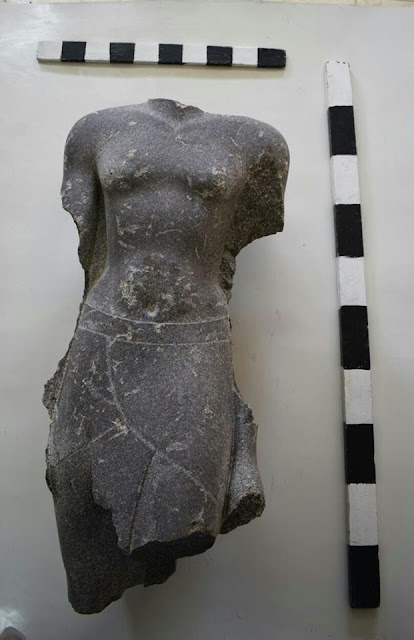An Egyptian excavation mission has discovered remains of mud-brick walls and several artefacts that can be dated to different periods of the ancient Egyptian era as well as four furnaces from the Late Period (664-332 BCE) during excavation work carried out in Tel Al-Pharaeen archaeological site known as “ancient Buto” in the Kafr Al-Sheikh Governorate.
 |
| View of the Buto site [Credit: Ministry of Antiquities] |
Ayman Ashmawy, Head of the Ancient Egyptian Antiquities Sector at Egypt's Ministry of Antiquities, told Ahram Online that studies on the walls' remains suggested that it could possibly represent the main ancient axis of the Buto temple, and the furnaces may have been used for the preparation of the offerings presented to deities inside the temple.
 |
| Credit: Ministry of Antiquities |
He continued that the mission has also uncovered the foundation of two limestone columns that may had once have been part of the temple’s hall of pillars, in addition to a limestone statue of King Psamtik I seated on the throne and holding the royal handkerchief in his right hand. The upper part of the statue is damaged, Ashmawy noted.
 |
| Credit: Ministry of Antiquities |
A part of a yet unidentified royal statue has also been found but preliminary examination suggests that it too could belong to King Psamtik I.
 |
| Credit: Ministry of Antiquities |
The statue is skillfully carved in black granite. It is missing the head, neck, and a segment below the knee, as well as the base and parts of the arms. It depicts the king wearing the Shendit (royal kilt). Both statues and their fragments were transferred to the stores of the ministry for conservation and restoration.
 |
| Credit: Ministry of Antiquities |
On his part, Hossam Ghoneim, head of the excavation mission, said that the mission uncovered the upper part of a statue of the god Hur engraved in quartzite, remains of an inscription bearing the name of the Buto, part of a granite royal hand with the remains of a royal cartouche of King Psamtik I, part of a Menit Necklace (the symbol of goddess Hathor), as well as a collection of pottery.
Author: Nevine El-Aref | Source: Ahram Online [January 01, 2018]





